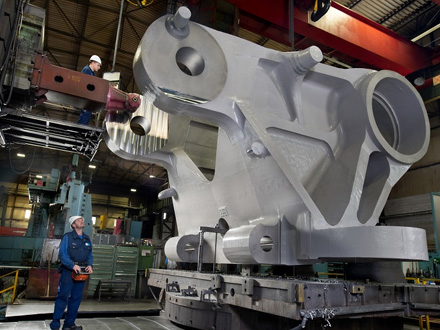Foundry Chromite sand chilling advantage
Chromite ore is a mineral formed by the condensed crystallization of chromite slurry. It generally presents a massive or granular aggregate. Chromite with low Cr2O3 content (30-45%) is suitable in the metallurgical industry to produce ferrochrome alloy and metal chromium. 46% Cr2O3 and above chromite ore can work as molding sand material in the foundry industry. Crushed and sieved Chromite sand with the fineness of AFS30-35, AFS35-40, AFS40-45, AFS45-50, and AFS45-55 are specifications of molding sand. Chromium ore sand has excellent thermodynamic properties such as high refractory temperature, low specific heat, and high thermal conductivity.
High thermal conductivity means a good chilling advantage. Especially, the theoretical value of the thermal conductivity of chromite sand is 0.63W/(M · K). It is higher than that of silicon sand and ceramic foundry sand. Moreover, at temperatures below 800 ° C, the thermal conductivity of chromite sand is equivalent to that of zircon sand. At a high temperature of 1000 ° C, the thermal conductivity of chromite sand is even higher than that of zircon sand. Therefore, for the casting of large cast iron and steel castings, when the pouring temperature is above 1200 degrees, chromite sand can play a role in accelerating cooling and allowing the first poured part to quickly solidify.
For the pouring of thick wall giant steel castings, the temperature can reach more than 1500 degrees. In this case, foundries can place a layer of chromite sand at the place where steel should solid quickly. As a result, chromite sand works as external chilling iron. So that the heat here can be quickly transmitted and shorten the solidification time of molten steel. At the same time, impurities and bubbles in the molten steel naturally rise to the pouring riser to prevent local impurities and porosity defects in the casting.

